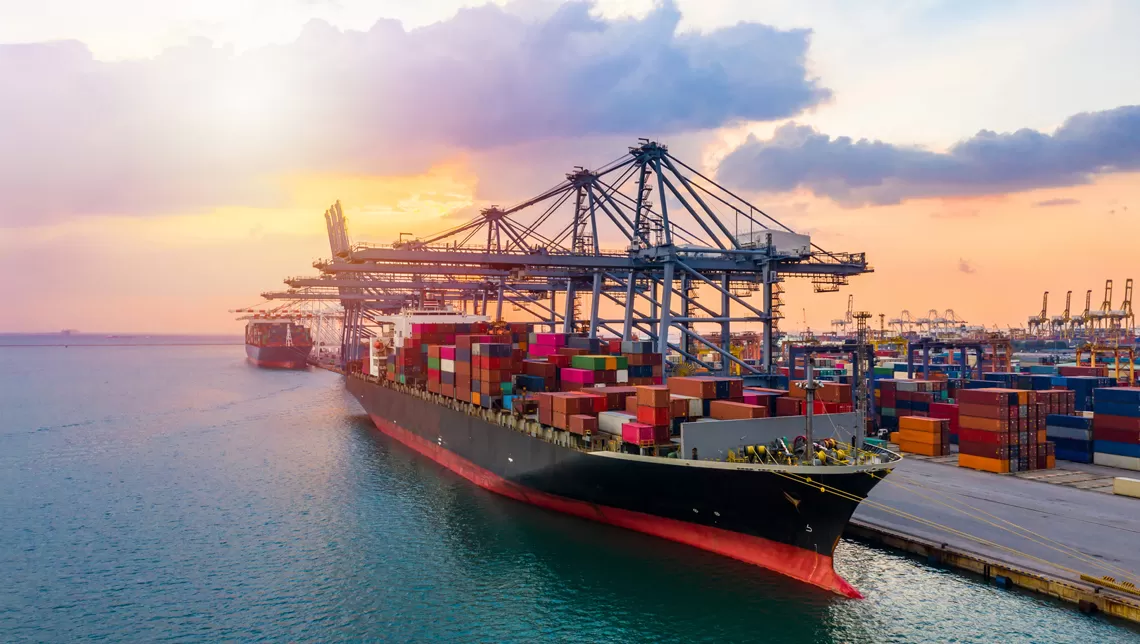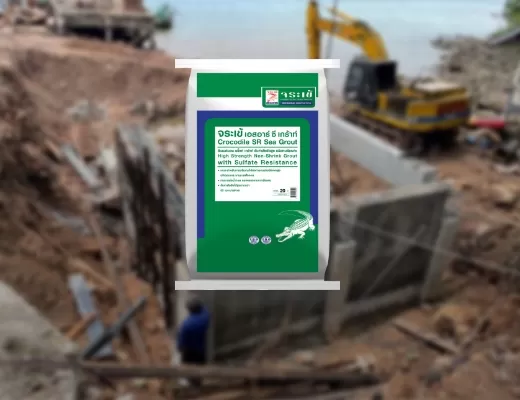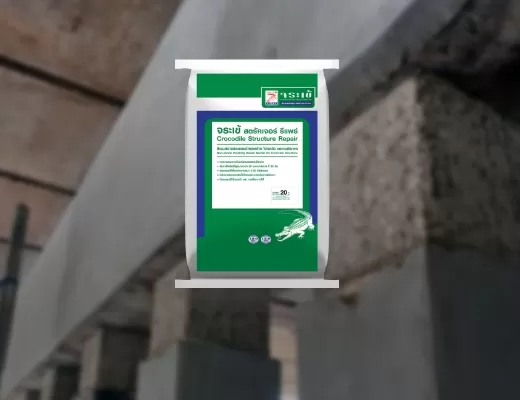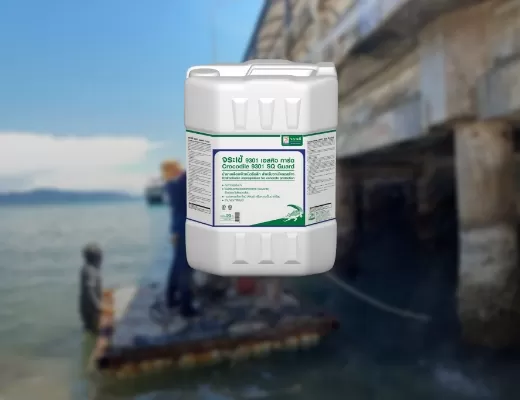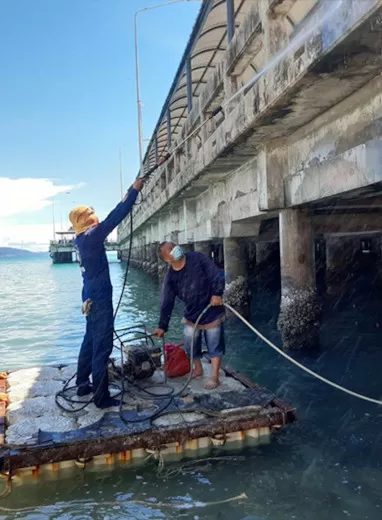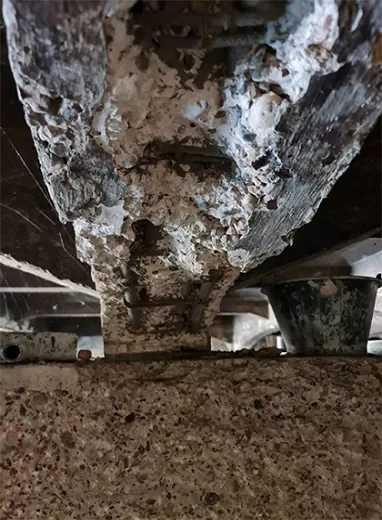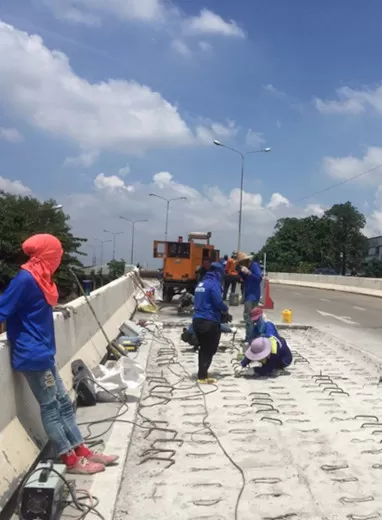Concrete problems due to sulfate compounds
Sulfate compounds, including sulfates, chlorides, commonly found in seawater, natural water sources, agricultural areas, groundwater, brackish water, and even in chemically-contaminated wastewater
Extended exposure of concrete to seawater can result in chemical reactions with sulfates, leading to potential damage both internally and externally within the concrete structure.
1. Chemical-related issues within concrete:
Chemical reactions generate new substances, causing expansion and deterioration of the concrete structure.
2. Physical issues on the exterior:
Salt deposits (efflorescence) or white stains can form on the surface of the concrete due to the presence of sulfates.

